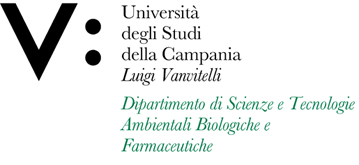Dario TEDESCO
Insegnamento di VULCANOLOGIA
Corso di laurea magistrale in SCIENZE E TECNOLOGIE PER L'AMBIENTE E IL TERRITORIO
SSD: GEO/08
CFU: 6,00
ORE PER UNITÀ DIDATTICA: 48,00
Periodo di Erogazione: Secondo Semestre
Italiano
| Lingua di insegnamento | ITALIANO, INGLESE e/o FRANCESE |
| Contenuti | Il corso di vulcanologia per non geologi, aiuta ed informare gli studenti sul rischio vulcanico e la sua valutazione. Sulla capacità di comprendere quali aree possono o meno essere sedi di attività vulcanica diretta o indiretta e sulla messa a punto di piani di contingenza ccontingency Plans) |
| Testi di riferimento | R.J. Blong. Volcanic Hazards; A sourcebook on the effects of eruptions. Academic Press, London. 1984. |
| Obiettivi formativi | Il corso fornisce una conoscenza di base dei principi della vulcanologia generale, cioè delle cause, delle dinamiche e delle diverse modalità e tipologie delle attività vulcaniche. Queste conoscenze permettono di acquisire la giusta chiave di interpretazione e quindi di gestione degli ambienti vulcanici con particolare attenzione al rischio per l’uomo ad esso associato. |
| Prerequisiti | Per lo studio della vulcanologia c'è bisogno di una buona (se non ottima) conoscenza della geologia. Tutti i corsi di Scienze della Terra del DISTABIF devono essere stati seguiti |
| Metodologie didattiche | Il corso si basa su presentazioni power points and sulla discussione di articoli scientifici che pongono le basi per una conoscenza generale di Vulcanologia. Discussioni interattive con gli studenti e escursioni in campo, aiutano a comprendere le basi del corso |
| Metodi di valutazione | Continui test orali con presentazioni effettuati direttamente dagli studenti sugli argomenti del corso. |
| Altre informazioni | Nessuna |
| Programma del corso | I vulcani in rapporto con i principali domini geodinamici: dorsali oceaniche, isole oceaniche, margini continentali (archi insulari e catene montuose recenti), aree continentali. Sorgenti dei magmi e meccanismi di risalita. Caratteristiche fisiche e chimiche dei magmi. |
English
| Teaching language | Italian, English and/or FRENCH |
| Contents | The class of Volcanology made for non-geologists helps students to have a clear view on volcanic risks and doing its evaluation. Plays on the capacity to understand which areas can (or cannot) be the site of volcanic activity, direct or indirect, and teach how to create a "Contingency Plan". |
| Textbook and course materials | Appunti dalle Lezioni and Presentation Power Point. |
| Course objectives | The class gives to students abasic knowledge of general volcanology, causes, dynamics and different kind of volcanic activities. These informations are crucial to understand key information to interpretate and working in active volcanic areas in terms of hazards warning and managements. How to build a contingency plan. |
| Prerequisites | This class strongly needs interactions and knowledge of geology. It is strongly recommended that all classes of earth sciences of DISTABIF should be made. |
| Teaching methods | This class is based on power point presentations and to the continuous study of article bringing students to the general basis of Volcanology. Daily discussions during classes and field excursions on active and/or extinct volcanoes will greatly help students to understand the basic information of this class. |
| Evaluation methods | Continuous oral tests with power point presentations organized from the students on the different subjects of the class. |
| Other information | None |
| Course Syllabus | First of all understanding volcanic activity in function different types of Volcanoes; e.g. in terms of different geodynamic domains/realms: oceanic rifts, oceanic island volcanisms, continental margins (arc volcanism and new orogenesis), continental volcanism. Magma source-regions and feeding system mechanisms from depth to the surface. Physical and chemical magmas characterization. |








